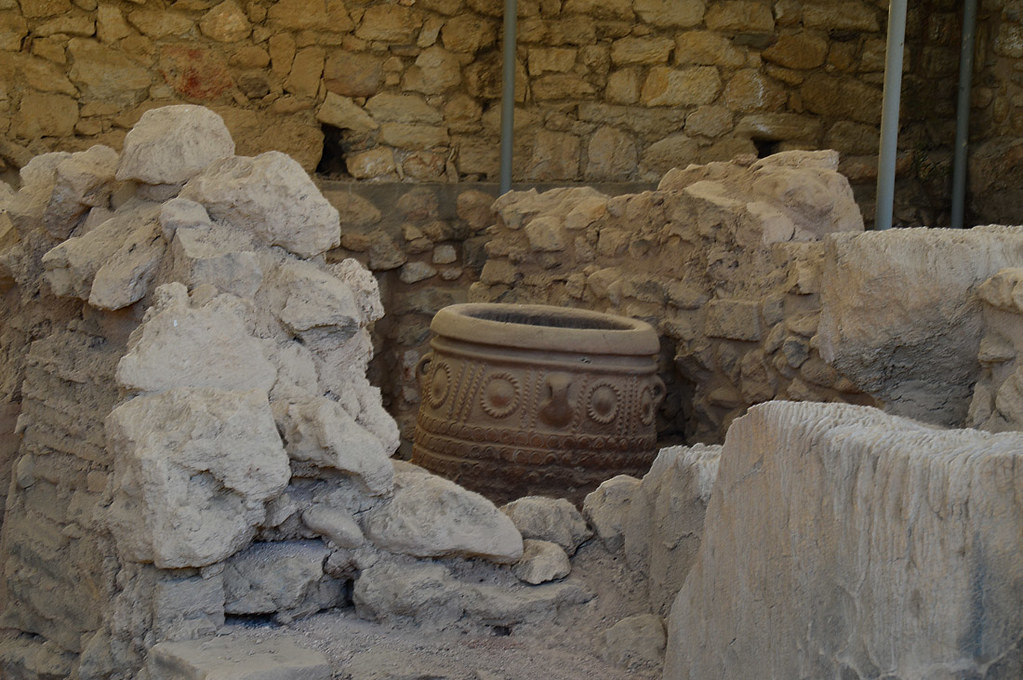Strategies Crete Island Doesn't Would Like You To Learn
02/22/2018

A fantastic trip throughout the https://en.search.wordpress.com/?src=organic&q=Crete Greece North White western side of the White Mountains ends at the plateau of Omalos.
The very first town we come to, is Fournes, abundant in orange trees and next is the village Laki, the last town prior to the plateau. Laki is a historic village, which has actually played an important part in all the Cretan transformations (1821-1866).
At the entrance of the plateau there are small stone homes occupied just during the summer season months. There is also the church of St. Panteleimon where we have the grave of find out about this the hero of the 1821 transformation versus the Turks, Hatzimichalis Yiannaris.
On the South part of the plateau You can see Xiloskalo from where the descent begins towards the gorge of Samaria.
After that we come to the village Samaria, a little settlement of woodcutters, which was deserted in 1965. After the town of Samaria we come to the Byzantine church of' the Sacred Mary of' Egypt. The little town is constructed on the ruins of ancient Tarra.
In Between St Roumeli and Sfakia it deserves going to the small seaside picturesque village Loutro. Here there utilized to he the ancient town Phinikas, port of Anopolis, which was amphitheatrically constructed to the coast. The foundations of buildings and vaulted reservoirs endure already.
Loutro is also priced quote in the first Byzantine period (330-824 A.d.) as a bishops seat.
SFAKIA is the capital of the province, constructed amphitheatrically, towards the Libyan Sea. Just the Venetian castle of' the 15th and 16th centuries endures, and it was called Sfakia or Sfachia and therefore the whole province took its name.
It was remodelled and utilized by the Turks. Owing to the barren soil the residents primary occupation was navigation, and commerce. After the damage by the Turks, Sfakia goes through a duration of decay (1821 ).
ANOPOLIS is located twelve kilometres northwest of Sfakia. The village is developed on the site of ancient Anopolis. Cyclopian walls of Pelasgic origin make it through in the settlement Riza.
It was widely known throughout the Hellenistic period, however it flourished primarily during the Roman and Byzantine period. In the first centuries of Venetian dominion, Anopolis was the centre of' resistance versus the Venetians. After 1365 and the repression of the rebellion of Kalergi, the whole town was destroyed and the inhabitants spread out to other districts.
In the start of Turkish dominion it was re-inhabited and the population, utilizing Loutro as a base, became chiefly navigators.
ARADENA On the Western side of the homonymous gorge we find the deserted town of Aradena. agreekadventure.com/paddle-board-yoga-working-out-having-fun Here existed the ancient town Aradin or Iradin, ruins which endure near the town. It is thought that it was established by Phoenicians. Its name is related to the Phoenecian word Aruad, which suggests refuge. A homonymous city existed likewise in Phoeniki. We can see the Byzantine church of the Archangel Michael, of the 14th-15th century which was developed on the eastern area of the main aisle of the three-aided older basilica of the 5th Crete Greece or 6th century. Throughout the period of the Turkish dominion numerous clashes between the Turkish conquerors and the Cretans occurred.
ST. JOHN is a small village at a high elevation where we can see the churches of St John and of the Virgin Mary with gorgeous wall-paintings.
Towards the sea, we can see the church of St Paul likewise with terrific wall-paintings where there is a spring of fresh water in which, according to custom, St Paul, baptised pagans while visiting Crete.
On the East of Sfakia and near the sea there is the district of Francocastello where a Venetian castle stands. It's shape is rectangle-shaped with a square-shaped tower at each corner.
On its gate there is a relief' of' the lion of St Mark and on the left and right Venetian crowns. The inner buildings and the loopholes are constructed by the Turks.
Under the structure there are vestiges of the church of St Mark.
Near the fortress towards the sea the church of St Haralambus makes it through in ruins in addition to the older church of St Nikita with wall-paintings which are extinct. Here in the old days great festivities took place and individuals from Sfakia danced completely armour to show their war capabilities. Today the custom is restored during the celebration in favour of St Nikita (15th September).
The fortress began being built circa 1340 and the Venetians named it the Castle of St Nikita. The people of Sfakia however, considering it foreign, called it Francocastello, namely castle of the Francs - a name Crete island which has prevailed up to this day. It is said that during the second fortnight of May, when windlessness dominates at sea, in the early morning hours, shadows are seen in the area, which resemble armed horse-riders, who ride from the church of St Haralambus to the Fortress.
Returning to Hernia we go though the wild Holidays in Crete mountains of Sfakia, the exceptional gorge of' Imbros and the homonymous town and come to Askifou. In this area numerous bloody battles both versus the Venetians and the Turks took location as it makes up the only access to the town of the province of Sfakia.
As we descend we come to the plateau of Krapis and beside the very stunning and very green village Vrisses. Two kilometers after Vrisses we come out onto the National Road which signs up with Rethymnon to Hernia.
We are of the opinion that it would be more effective if the journey were made either as an organized trip or a local bus as you can't return to the Omalos if you decide to cross the ravine of Samaria.